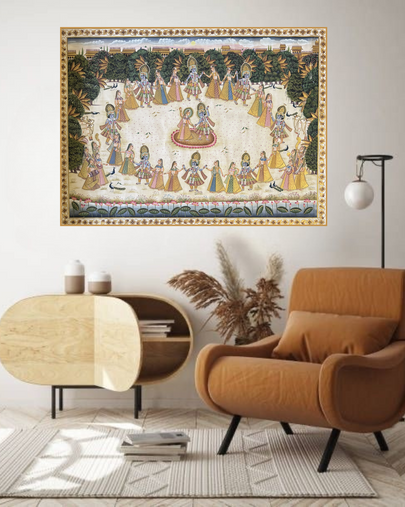top of page
Artist Details
Pichwai, a traditional art form that emerged over 400 years ago in Nathdwara, Rajasthan, is known for its intricate and visually captivating depictions of Lord Krishna’s life. Painted on cloth, these artworks often illustrate Shrinathji, a form of Krishna as a seven-year-old child, along with Radha, gopis, cows, and lotuses. Pichwai paintings are deeply tied to festivals and celebrations such as Sharad Purnima, Raas Leela, Annakoot, Janmashtami, Gopashtami, Diwali, and Holi.
The name Pichwai comes from the words pichh (back) and wai (textile hanging), as these paintings were originally designed to adorn the temple walls of Shrinathji in Nathdwara. Created by the artisans of the Pushti Marg sect, founded by Shri Vallabhacharya in the 16th century, these artworks served as seasonal backdrops for temple rituals, marking important events in Krishna’s life. Over time, their visual appeal and spiritual significance led to their presence in private collections and homes.
A unique aspect of Pichwai art is its use of natural colors, derived from minerals, plants, flowers, and even gold and silver leaf. These pigments not only add richness and depth to the paintings but also ensure their longevity and sustainability. The vibrant blues, deep reds, and shimmering golds carry symbolic meanings, enhancing the spiritual and aesthetic essence of each piece.
Over time, Pichwai paintings have found a place in the homes of art connoisseurs, appreciated for their intricate artistry and spiritual significance. However, like several other traditional Indian art forms, Pichwai is at risk of fading into obscurity and requires recognition and revival to preserve its rich heritage.
bottom of page




